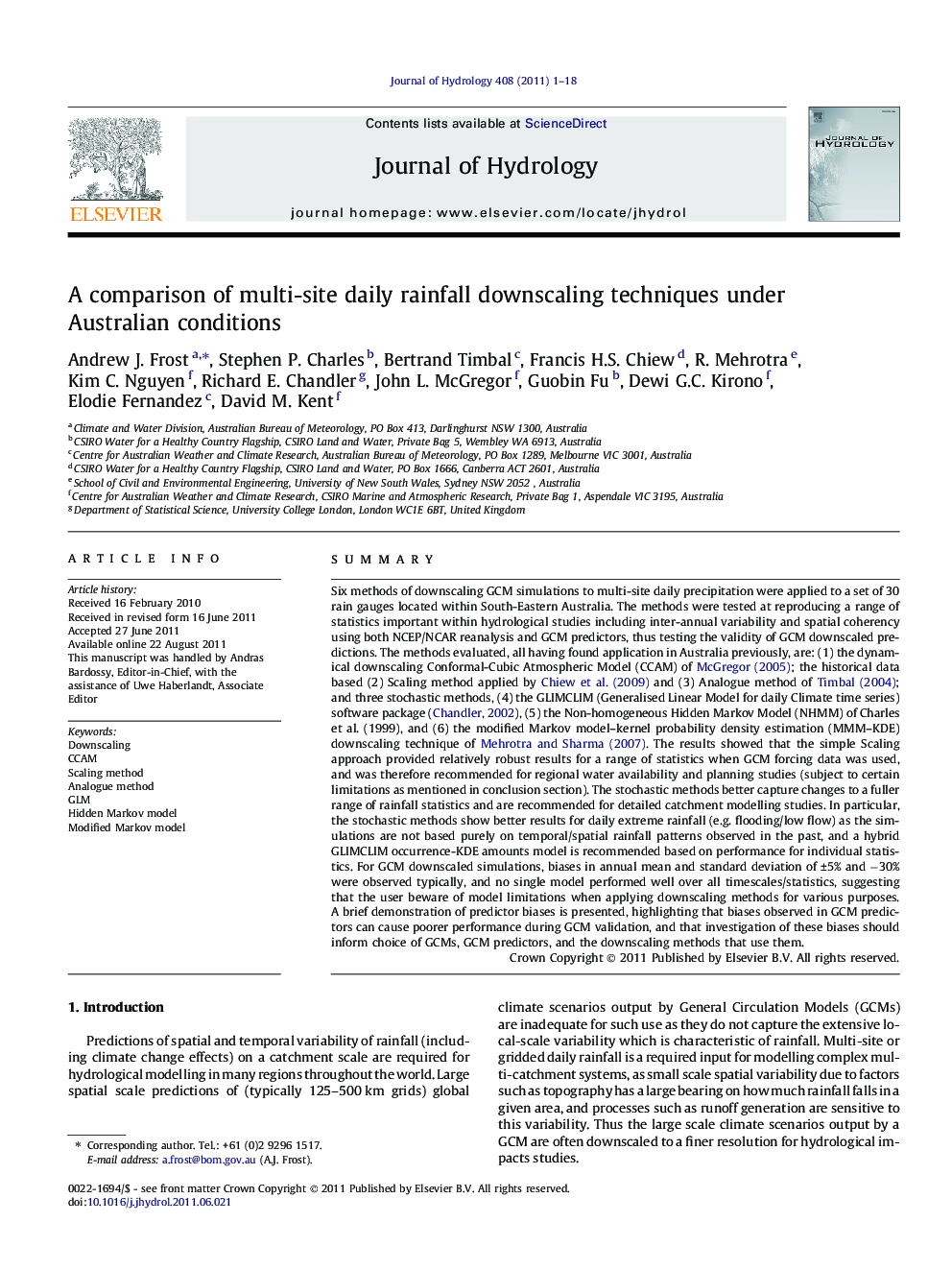| کد مقاله | کد نشریه | سال انتشار | مقاله انگلیسی | نسخه تمام متن |
|---|---|---|---|---|
| 4577608 | 1630013 | 2011 | 18 صفحه PDF | دانلود رایگان |

SummarySix methods of downscaling GCM simulations to multi-site daily precipitation were applied to a set of 30 rain gauges located within South-Eastern Australia. The methods were tested at reproducing a range of statistics important within hydrological studies including inter-annual variability and spatial coherency using both NCEP/NCAR reanalysis and GCM predictors, thus testing the validity of GCM downscaled predictions. The methods evaluated, all having found application in Australia previously, are: (1) the dynamical downscaling Conformal-Cubic Atmospheric Model (CCAM) of McGregor (2005); the historical data based (2) Scaling method applied by Chiew et al. (2009) and (3) Analogue method of Timbal (2004); and three stochastic methods, (4) the GLIMCLIM (Generalised Linear Model for daily Climate time series) software package (Chandler, 2002), (5) the Non-homogeneous Hidden Markov Model (NHMM) of Charles et al. (1999), and (6) the modified Markov model–kernel probability density estimation (MMM–KDE) downscaling technique of Mehrotra and Sharma (2007). The results showed that the simple Scaling approach provided relatively robust results for a range of statistics when GCM forcing data was used, and was therefore recommended for regional water availability and planning studies (subject to certain limitations as mentioned in conclusion section). The stochastic methods better capture changes to a fuller range of rainfall statistics and are recommended for detailed catchment modelling studies. In particular, the stochastic methods show better results for daily extreme rainfall (e.g. flooding/low flow) as the simulations are not based purely on temporal/spatial rainfall patterns observed in the past, and a hybrid GLIMCLIM occurrence-KDE amounts model is recommended based on performance for individual statistics. For GCM downscaled simulations, biases in annual mean and standard deviation of ±5% and −30% were observed typically, and no single model performed well over all timescales/statistics, suggesting that the user beware of model limitations when applying downscaling methods for various purposes. A brief demonstration of predictor biases is presented, highlighting that biases observed in GCM predictors can cause poorer performance during GCM validation, and that investigation of these biases should inform choice of GCMs, GCM predictors, and the downscaling methods that use them.
► We compare a range of multi-site rainfall downscaling models for hydrological purposes.
► Dynamic and stochastic models were compared using many rainfall statistics.
► A simple resampling scaling method performed well across a wide range of statistics.
► The more complex stochastic methods reproduced statistics that cannot be reproduced by scaling.
► Biases in GCM predictors are suggested as a possible cause of poor performance in GCM validation.
Journal: Journal of Hydrology - Volume 408, Issues 1–2, 30 September 2011, Pages 1–18